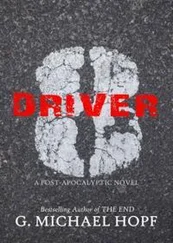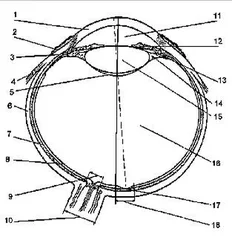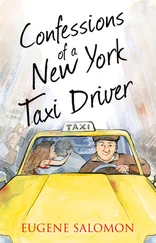State of New Jersey Motor Vehicle Commission - Driver Manual
Здесь есть возможность читать онлайн «State of New Jersey Motor Vehicle Commission - Driver Manual» весь текст электронной книги совершенно бесплатно (целиком полную версию без сокращений). В некоторых случаях можно слушать аудио, скачать через торрент в формате fb2 и присутствует краткое содержание. Жанр: sci_state, Юриспруденция, sci_transport, на английском языке. Описание произведения, (предисловие) а так же отзывы посетителей доступны на портале библиотеки ЛибКат.
- Название:Driver Manual
- Автор:
- Жанр:
- Год:неизвестен
- ISBN:нет данных
- Рейтинг книги:4 / 5. Голосов: 1
-
Избранное:Добавить в избранное
- Отзывы:
-
Ваша оценка:
- 80
- 1
- 2
- 3
- 4
- 5
Driver Manual: краткое содержание, описание и аннотация
Предлагаем к чтению аннотацию, описание, краткое содержание или предисловие (зависит от того, что написал сам автор книги «Driver Manual»). Если вы не нашли необходимую информацию о книге — напишите в комментариях, мы постараемся отыскать её.
Driver Manual — читать онлайн бесплатно полную книгу (весь текст) целиком
Ниже представлен текст книги, разбитый по страницам. Система сохранения места последней прочитанной страницы, позволяет с удобством читать онлайн бесплатно книгу «Driver Manual», без необходимости каждый раз заново искать на чём Вы остановились. Поставьте закладку, и сможете в любой момент перейти на страницу, на которой закончили чтение.
Интервал:
Закладка:
Hood Latch Failure
If the vehicle’s hood suddenly flies up, the motorist should slow down immediately. He/she should try to look under the hood to see the road or look out of the side window around the hood. Using the center line or lane markings as a guide, the motorist should pull the vehicle to a safe area off the roadway as soon as possible.
Windshield Wiper Failure
When windshield wipers stop suddenly during rain or snow, the motorist should slow down, pull to a safe area off the roadway and turn on emergency flashers. Call for help if necessary.
Collisions (accidents)
Avoiding Collisions
No matter how careful a motorist is, emergencies do arise. A motorist many not always be able to avoid a collision. This is why it is important to know how to safely handle any type of situation that may occur. Proper reaction could save the life of the motorist and his/her passengers or others involved. Above all, seat belts should always be worn while driving.
If a motorist sees that his/her vehicle may hit something, one of three things can be done: stop, turn or speed up.
Stop quickly: If the vehicle has conventional disc and drum brakes, the motorist should pump the brakes to gain better control in steering. The wheels will lock and cause skidding if a motorist brakes too hard and holds them down. If the vehicle has antilock brakes (ABS), they will adjust automatically if a wheel begins to lock. With this brake system, a motorist can put maximum pressure on the brakes and retain steering control without pumping the brakes.
Turn quickly: If a motorist cannot stop in time, he/she should turn away and drive off the road if necessary. If the motorist can keep from using the brakes while turning, this will lessen the chances of a skid. A motorist should not brake hard if turning onto a soft shoulder of a road. This could cause skidding or loss of control.
Speed up: Sometimes it is best or necessary to speed up to avoid a collision. This may happen when another vehicle is about to hit a motorist’s vehicle from the side or from behind, and there is room to the front to get out of danger. A motorist should push the gas pedal to the floor. There may be only seconds to act, so a motorist must decide quickly. Once the danger has passed, the motorist should slow the vehicle’s speed.
Last-Minute Choices
A motorist should never panic, especially in the few seconds before a possible collision. There are some last-minute choices that he/she will have to make. A motorist should always be aware of what to do in an emergency situation. Reacting properly and quickly can avoid collisions or, at least, minimize damage.
If a collision looks possible, the motorist should turn away from oncoming traffic, even if it means leaving the road. Driving off the road, rather than skidding, gives the motorist more control over the vehicle. The motorist should choose to hit something that will give way (such as brush or shrubs) rather than something hard.
Choose to hit something moving in the same direction, rather than something that is not moving. Choose to hit something not moving, rather than something coming straight on. If hitting something is unavoidable, try to make it a glancing blow. A sideswipe, for example, will help slow the vehicle. Try to never hit anything head-on. For every inch that a motorist steers away from a collision between the center of the vehicle’s front end and the center of the oncoming object, the energy of the collision will dissipate and reduce injury and damage.
Rear Collision
If the vehicle is about to be hit from the rear, the motorist must be ready to apply the brakes to avoid being pushed into a vehicle ahead. The motorist should brace his/her body between the steering wheel and the seat back, pressing the back of his/her head firmly against the head rest (if vehicle has one).
Side Collision
If the vehicle is about to be hit from the side, the motorist should keep a tight grip on the steering wheel. This may keep him/her from being thrown against the side of the vehicle. The motorist should be ready to turn fast, so that if the vehicle spins around, he/she can try to control the vehicle.
Head-On Collision
If the vehicle is about to be hit from the front, the motorist should use his/her arms and hands to protect his/her face if wearing a shoulder strap and the vehicle is equipped with air bags. If the vehicle is not equipped with a shoulder strap or air bags, the motorist should throw himself/herself across the seat to keep from hitting the steering wheel or windshield. Air bags will typically deploy in vehicles that have them.
Parked Vehicle Collisions
If a motorist hits a parked vehicle, the police must be notified. The motorist should also try to find the owner of the vehicle.
What to do in case of a collision
If a motorist witnesses a collision or is involved in one, he/she should follow these tips in order to help protect everyone involved:
* Stop the vehicle.
* Remain calm.
* Assume the worst and get help (notify the police; call an ambulance).
* Wait at the scene, but try not to block traffic.
* Ask for assistance from passing motorists, bikers or joggers, if needed.
* Depending on the location of the accident – local road, highway or in a busy city intersection–warn oncoming traffic.
Reporting Accidents (N.J.S.A. 39:4-130, 39:4-131)
New Jersey law requires motorists to notify the police of accidents where there is injury, death, or vehicle or property damage. If someone has been killed, do not move the body or permit anyone to move the body until the police or ambulance arrives.
If the motorist is involved in the accident, he/she can help the police by answering as many questions as possible and by giving them as many facts about the accident as possible. When damage to property is more than $500 or there is personal injury, a motorist must:
* Send a written report to the MVC within 10 days if no police report is filed. A written report is not required if a report is filed by police. A motorist can get a copy of the report form from the police.
* Notify his/her insurance company at once, giving complete information about the accident.
* If the motorist is shaken up, he/she should see a doctor as soon
Chapter 6. Drinking, drugs and health
Effects of alcohol
Alcohol is a drug that affects overall driving ability. Alcohol may make a motorist overconfident and unable to think clearly. Motorists who drink may make more mistakes. Even if a motorist thinks he/she is below the level of legal intoxication, alcohol will affect driving. Drinking even a small amount of alcohol increases a motorist’s chances of having an accident. Never drink and drive.
Driving under the influence of intoxicating beverages means that a driver’s senses and judgment are impaired by alcohol. After two, three or four drinks, alcohol begins to impair reaction time, coordination and balance. Vision and the ability to judge distance are affected, making it more difficult to react and to drive safely. The only thing that can make a person sober is time. The body removes alcohol slowly. The liver oxidizes (burns up) 90 percent of the alcohol. The other 10 percent is eliminated in breath, urine and sweat. This fact is the prime reason why sober-up-quick methods do not work.
In addition, studies have proven conclusively that a combination of alcohol and anger is responsible for much of the reckless, aggressive driving that can cause fatal highway accidents. While most alcohol-related collisions involve only one vehicle, they frequently result in the death or serious injury of numerous people, including passengers, pedestrians and other motorists.
Читать дальшеИнтервал:
Закладка:
Похожие книги на «Driver Manual»
Представляем Вашему вниманию похожие книги на «Driver Manual» списком для выбора. Мы отобрали схожую по названию и смыслу литературу в надежде предоставить читателям больше вариантов отыскать новые, интересные, ещё непрочитанные произведения.
Обсуждение, отзывы о книге «Driver Manual» и просто собственные мнения читателей. Оставьте ваши комментарии, напишите, что Вы думаете о произведении, его смысле или главных героях. Укажите что конкретно понравилось, а что нет, и почему Вы так считаете.









![Nicholas Timmins - The Five Giants [New Edition] - A Biography of the Welfare State](/books/701739/nicholas-timmins-the-five-giants-new-edition-a-thumb.webp)

